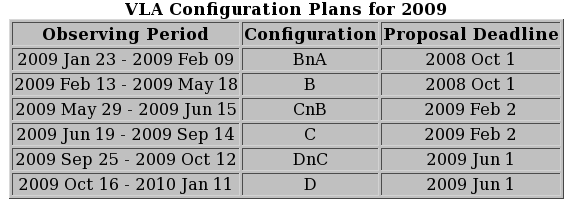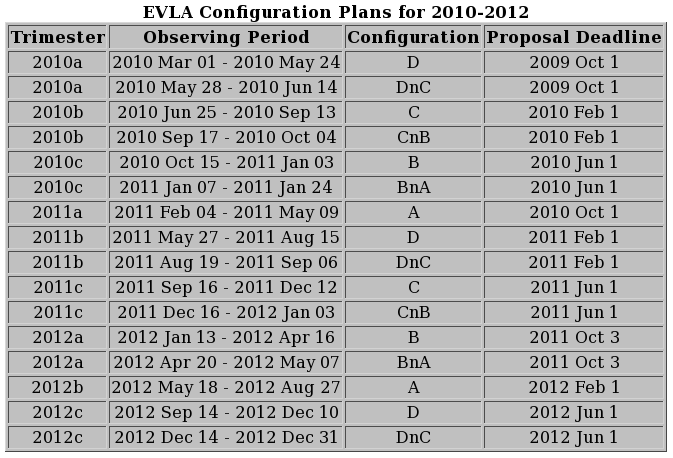VLA/EVLA Configuration Plans and Proposal Deadlines
The antennas in the Very Large Array are used like the zoom lens in a camera. When they are in the A configuration, the telescopes extend over the 21 kilometer (13 mile) length of each arm. This simulates a single dish that is 36 kilometers (22 miles) in diameter. In this configuration, we have the most magnification and can see the greatest detail. The size of the array gradually decreases with the B and C configurations until, in the D configuration, the telescopes are all placed within .6 kilometer (.4 mile) of the center. In the smaller configurations, scientists can study the overall structure of the source they are observing. By observing the same source in each configuration, scientists can gather a great deal more information.
The telescopes are moved about every four months. The configurations listed below with a lower-case "n", such as "DnC" and "BnA" are hybrid configurations in which the antennas on the east and west arms are moved in for the next configuration, but those on the north arm remain extended for a short time to enhance our view of sources in the southern sky.

At the end of the VLA D configuration in 2010 Jan the VLA correlator will be turned off, and the VLA will not be available for an interval of up to 2 months while hardware is moved from the VLA correlator to the new correlator for the Expanded Very Large Array (EVLA). When observing resumes with the EVLA, it will be in the D configuration. For the EVLA, the order of the configurations will be: D, DnC, C, CnB, B, BnA, A. For more information on the EVLA, see the EVLA Observational Status Summary.

